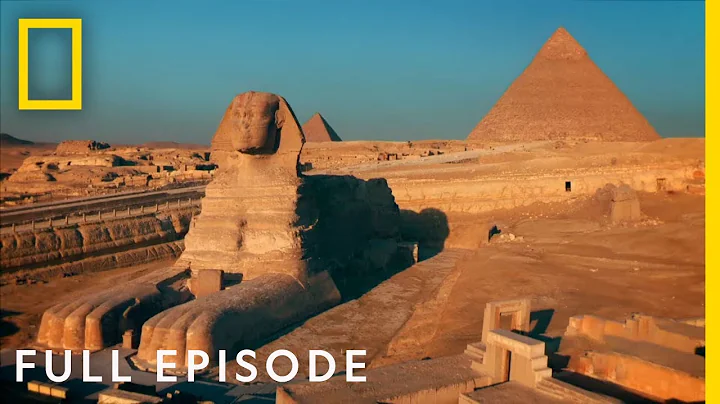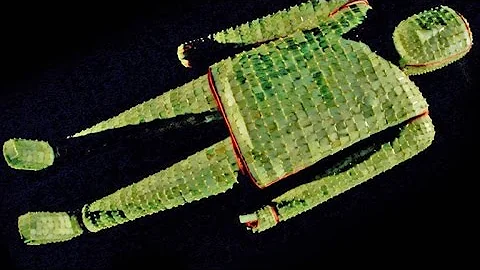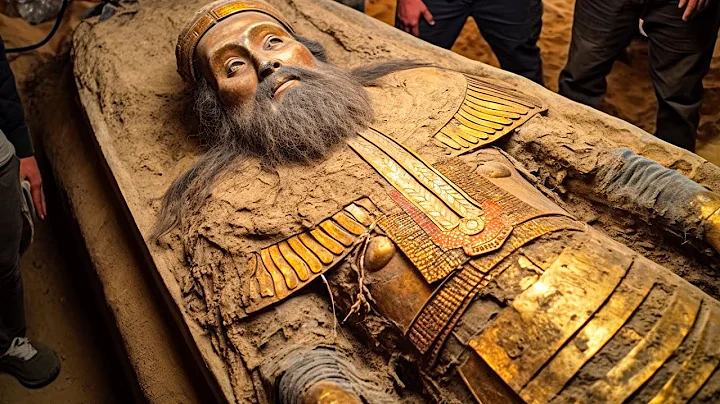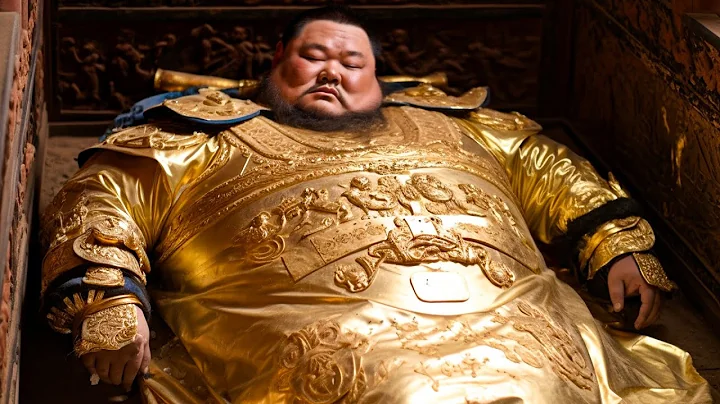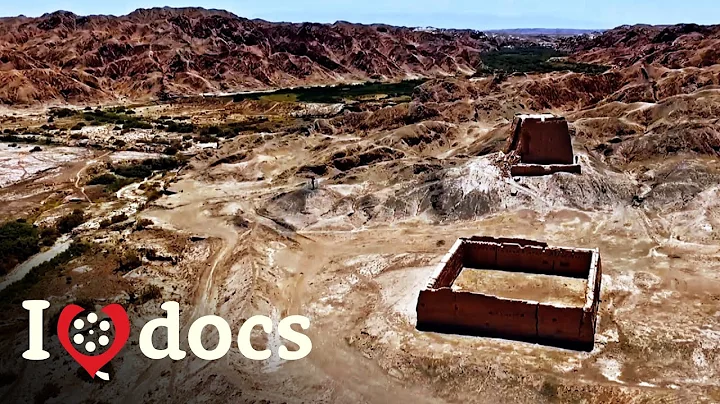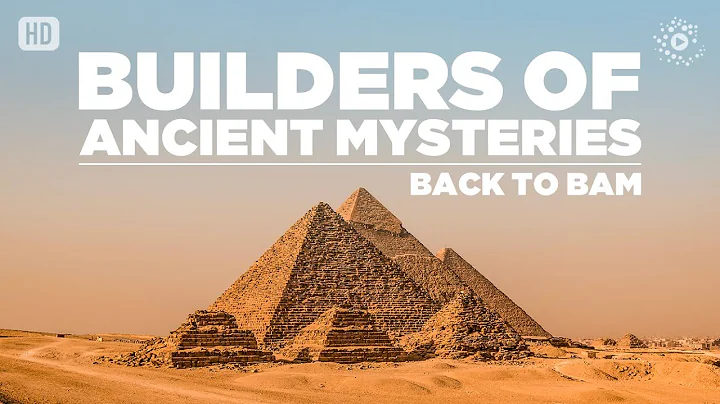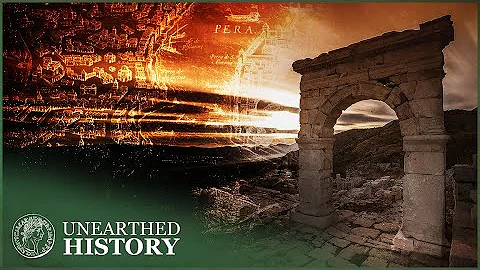The largest underground imperial tomb in history took 720,000 people to build for 39 years. Its luxurious and exquisite design has attracted countless tomb robbers for thousands of years. Has it become nothing more than an empty shell? Why are we still afraid to open it? Today I will reveal to you the secret of one of China's three major imperial mausoleums Mausoleum of Qin Shihuang .

Statue of Qin Shihuang
Qin Shihuang was the first emperor in Chinese history and the first person to unify China. His mausoleum is located at the northern foot of Lishan , 5 kilometers east of Lintong District, Xi'an City, Shaanxi Province. About this The mausoleum, Sima Qian is recorded in Historical Records . As soon as Qin Shihuang ascended the throne, he began to dig up Mount Li to build a tomb for himself. When he unified the world, he recruited more than 700,000 people from all over the country and dug through the three layers of land. The mausoleum was built using underground water, and the mausoleum was filled with rare treasures. The craftsmen were asked to make many mechanisms, and anyone who approached would be shot to death.
In addition, there are rivers, lakes and seas made of mercury, which are driven by mechanisms. There are celestial phenomena such as the sun, moon and stars on the top of the tomb. There are 36 mountains and rivers belonging to the Qin Kingdom on the ground. Candles made of mermaid paste can be Burn for a long time. Qin II said that it was not appropriate for the former emperor to release the concubines who had not given birth to children in the harem, so they were buried in sacrifice, and many, many people died.

In 2003, China launched the largest geophysical and archaeological survey of Qin Shihuang’s Mausoleum and the 863 Project. Geophysical exploration means physical exploration. This investigation mainly wants to use remote sensing and geophysical detection technology to detect whether there is an underground palace under the mound. I will not go into detail about the various technical methods used in this detection. Just one conclusion: there is indeed an underground palace under the mound of earth. It is 30 meters underground, 170 meters from east to west, and 145 meters from north to south. It is shaped like a funnel. The tomb chamber is 80 meters from east to west, 50 meters from north to south, and 15 meters high in the center of the underground palace. It is as big as a football field. This time, more advanced methods were used to detect the mercury in the tomb, and a location with abnormally high mercury content was found, which is consistent with China. The Yellow River , Yangtze River, Bohai , Yellow Sea have roughly the same orientation, which means that the rivers and lakes made of mercury in the underground palace may really exist and have not dried up. More importantly, he imitated the real geography. The terrain, the underground palace of Qin Shihuang's Mausoleum is probably a miniature version of China.

Mausoleum of the First Qin Emperor
Since the underground palace is indeed under the mound of sealed earth, has the Mausoleum of the First Qin Emperor been stolen in more than 2,000 years? Logically speaking, there should be none, because the mercury in the tomb is still there. If it had been robbed and excavated, the mercury should have evaporated. However, "Historical Records of the Great Ancestor", "Hanshu Liu Xiangzhuan", and "Shui Jing Zhu" all recorded that Xiang Yu had visited Qin Shihuang's tomb, and "Hanshu Liu Xiangzhuan" stated that people in the past had seen him digging tombs. A shepherd boy lost his sheep, and the sheep fell into a hole. The shepherd boy took a torch to look for the sheep, but a fire broke out and burned his coffin. It is said that the fire burned for three months before it was extinguished. "Shui Jing Zhu" It is said in the book that Xiang Yu used 300,000 people to transport the treasures from Qin Shihuang's mausoleum, and it took 30 days to transport them all.
First of all, some people think that the records in "Han Shu Liu Xiang Zhuan" are impossible. If there were a hole that could lead directly to the cemetery, the mercury would have evaporated over 2,000 years ago, and we now know that the underground palace is more than 30 meters deep under the mound of sealed earth, which is equivalent to 10 It was multi-story high. At that time, the mound was still more than 100 meters high. If a sheep fell down, it would be smashed into mutton patties. How did the child get down? Even if we follow, there is no oxygen in such a deep place and the torches are extinguished. How can we still burn down the tomb? Not to mention it burned for more than 90 days. In addition, there is another piece of evidence. In the 863 Project, the archaeological team drilled more than 50,000 small holes around the Mausoleum of Qin Shihuang and determined that the tomb passage leading to the underground palace was sealed by Wuhua soil, and Wuhua soil was not found. It has been moved, so the records in the biography may not be true.

Afang Palace
Next is "Shui Jing Zhu", and his description is also a bit exaggerated, because the underground palace is so big, even if it is full of things, it is impossible for an army of 300,000 people to transport all the goods in three months, then it is Doesn’t it mean that Xiang Yu dug up Qin Shi Huang’s mausoleum and didn’t exist at all? This is not true, because the Mausoleum of Qin Shihuang at that time was not just a pile of land, but there were many palace complexes on the ground. According to records, many rare treasures were also displayed in these palaces, and there was also the Mausoleum of the First Emperor around the palace complex. Officials, their residences and offices, quarries, warehouses and other buildings. According to modern archaeological surveys of the remaining ruins of these buildings, they do have traces of being burned by fire. In addition, there are many burial pits in the Mausoleum of the First Emperor of Qin, such as the world-famous eighth wonder of the world, the "Terracotta Warriors and Horses Pit". Some of them terracotta warriors and horses also have traces of being artificially damaged and burned, so Xiang Yu probably burned the ones on the ground. In the palace area, he also excavated and destroyed part of the funerary area, but he did not find the underground palace at all, so he gave up later.
In addition to the above articles, there are many historical books that record that other people have visited the Mausoleum of Qin Shihuang, such as Shi Hu in "Book of Jin", Huang Chao in "Lishan Ji", etc. But according to these records in the history books The results of the identification and various scientific and technical methods show that no matter how many people disturbed it for more than 2,000 years, the underground palace of Qin Shihuang's Mausoleum was very lucky to be preserved intact. The maximum number of people involved in the construction of this mausoleum was 720,000 people, which was almost 1/10 of the total population of the country at that time. It took a total of 39 years to build the mausoleum. The largest mausoleum of the earthly emperor in the world, Pyramid of Khufu , only had 100,000 people. There are many people and it only took 20 years to build.

If the Qin Shihuang Mausoleum includes the burial area, the total area would reach 560,000 square kilometers, equivalent to 78 Forbidden City. In order to still rule the Qin Empire after his death, Qin Shihuang brought everything underground including troops, carriages, arsenals, rare and exotic animals, and so on. From the burial pit outside his tomb, we have unearthed rare treasures such as terracotta warriors and horses and bronze carriages that shocked the world. So what rare treasures will there be in his underground palace? I think this is a question that everyone is curious about. If nothing else, the rivers, lakes and seas made of mercury that we have detected now are already a large organ. If Qin Shihuang’s underground palace is opened, we will not only be able to feast our eyes on it , I believe it will be able to solve many unsolved mysteries in archeology and history.
But now there is a consensus in the archaeological community that the Mausoleum of Qin Shihuang does not dare to be opened. Why? Tomb robbers in the past could not open the Mausoleum of Qin Shihuang because they could not find the underground palace. Even if they found the underground palace, if they knew about the anti-theft methods in the underground palace, the crossbow traps, and the poisonous gas emitted by mercury, I believe they would not dare to open it. And we We dare not open it now, mainly because the protection methods for cultural relics are not up to the level of the Qin Shihuang Mausoleum. The mound is 485 meters wide from east to west and 515 meters long from north to south. If we want to excavate the Mausoleum of Qin Shihuang, we must first build a protective greenhouse with a span of no less than 500 meters. Putting aside the difficulty of building a protective greenhouse with such a large span, even if the sealing pile is built, should we uncover it or If we don’t uncover it, wouldn’t the spectacular ground landscape of Qin Shihuang’s Mausoleum be lost? Even if we can open the underground palace without connecting to the climatic conditions, there must be many precious murals in the underground palace. Silk fabrics and books will still be in the air in an oxygen-free environment. Filled with large amounts of mercury, it does protect them from decay.

Colored Terracotta Warriors
But once we open the underground palace and come into contact with oxygen, they will rapidly decompose. This is the hourglass phenomenon of time in archeology. Fresh lotus root slices were unearthed in Mawangdui , but they turned into ashes when exposed to air.In addition, the Terracotta Warriors and Horses actually had very bright colors when they were first unearthed, but after they were unearthed, the colors quickly disappeared and turned into the gray and bare appearance we see now. This kind of loss is irreparable. How can we ensure that oxygen does not enter the underground palace? The underground palace is buried more than 30 meters underground. The visible part is the size of a football field, and the internal space is huge. Even if it can be done, the technical difficulty can be imagined, and The amount of money that needs to be invested must also be astronomical. In addition to the difficulty of protection technology, the difficulty of excavating the Mausoleum of Qin Shihuang is also unprecedented in terms of the scale of excavation. At present, the largest tomb that has been excavated in our country is the "Qin Jinggong No. 1 Tomb". This tomb has a total area of 5,334 square meters and a depth of 24 meters. It took 10 years to dig. The Mausoleum of Qin Shi Huang is 50 times larger. According to this calculation, the Mausoleum of Qin Shi Huang was excavated. It will take at least 4 to 500 years, so our generation will not be able to see it.
In this issue, we mainly discuss why Qin Shihuang’s Mausoleum dare not be opened. If it can solve your little doubts, please give me a like, forward the comment, and follow to support it.
See you next time
